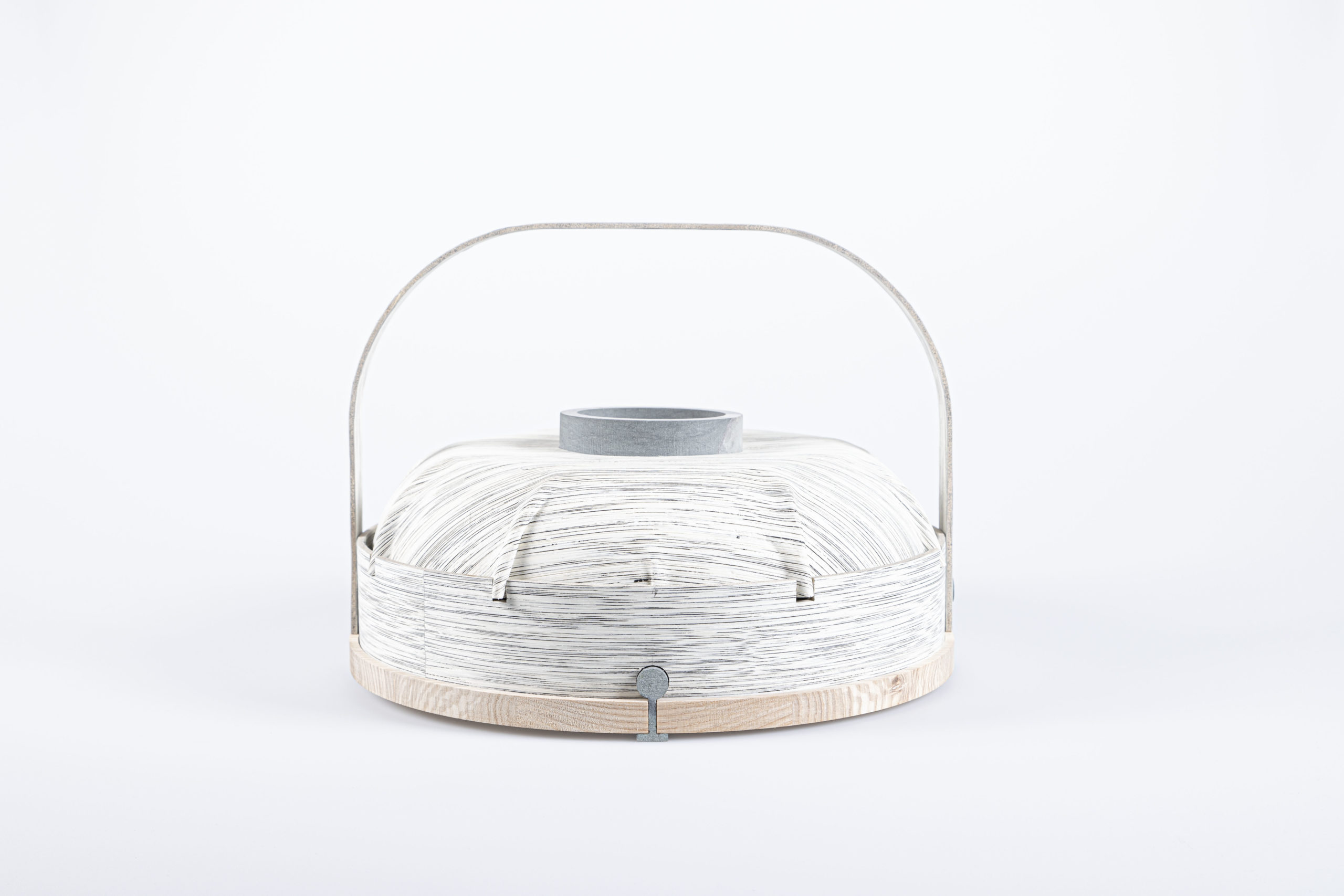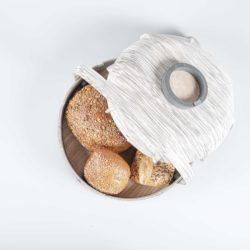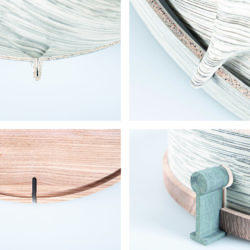N.O.S.W.
Description
N.O.S.W. can be used to purchase, store, prepare and serve bakery products. The bread box consists of the veneer of the rattan palm (karuun®) and Anröchter stone. The whole design broaches the issue of perception, handling and meaning of products in general. The modular items are being combined by a simple system of stone joints. The unique folds are produced by vacuum clamping and display individuality regardless of possible mass production. Not only the relationship between the individual and the product but also its origin, materiality and the production play an important role.What is the Topic?
For quite a while now, I have been dealing with the topic of sustainability in a broader sense. In a broader sense, because I'm not purely concerned with a material-specific or manufacturing-technical view. Points like material-efficient, material-fair, recycling-fair, pollutant-poor and repair-friendly design play a large role, nevertheless in my conviction the sustainability must be regarded in a larger context. Here I refer to the theoretical considerations and findings. In the course of a sustainable design approach, I have formulated guidelines and values for myself, according to which I have acted and designed.
Why does it look like this?
The form was created with the examination of the subject area of emotional design. The round base stands for security, inclusion, safe limitation and tranquillity. The simple form language emphasizes the individual components and their function. Clear, graphic geometry also makes the product easier to "read". The visual appearance of the veneer in combination with the stone is intended to offer a unique selling point through the difference and radical display of this material. The function and interaction with N.O.S.W. shows the results of the theoretical discourse of dealing with things. The bread box should invite you to buy fresh bread from a lokal baker in the neighborhood. This process should become an everyday ritual, creating memories and positive associations with the product. In this way, the lokal retailers can be supported and unnecessary packaging waste can be saved. The individual components are made for all key moments in contact with bread. The ash base is also a cutting board and the cover with handle can also be used as bread basket.
What is special?
In view of globalization and sustainability, the origin of the material was particularly important to me. Through a previous project I had contact with the OUT FOR SPACE team. They developed a veneer from the rattan palm called karuun®. 80% of rattan comes from Indonesia. It is a very important economic factor and an important source of income for the rural population. The farmers in Indonesia are paid fairly and the local economy is supported. At the same time, the rainforest is preserved as it is the basic prerequisite for growing rattan palms. In addition, rattan is not a monoculture and can be harvested after 5-7 years. It converts more CO2 into oxygen than is emitted during transport and the production of the veneer. Anröchter Stein comes from Westphalia. It is a natural material and 100% recyclable. In addition, German quarries are recultivated and reused. It offers new biotopes for rare animal and plant species. I would like to point out: We have the opportunity to act global and create a „Mehrwert“ (added or higher value) for the environment, the economy and social structures. The coordinates of the places of the materials origin is engraved on the top of the bread box. So the aspect of the origin is more clearly visible to the consumers. The coordinates may not directly readable, but we associate them with the origin of something and maybe gives us some food for thought. In addition, my intention was to increase the awareness of the product.
What is new?
By studying the perception, handling and meaning of things, I tried to gain insights into the relationship between person and product. I've been trying to figure out how that can be shaped - on formal and symbolic level. Can values be communicated through a product? I think YES. If the artifact is the subject of thought, it can also transfer values or at least provoke thinking.




